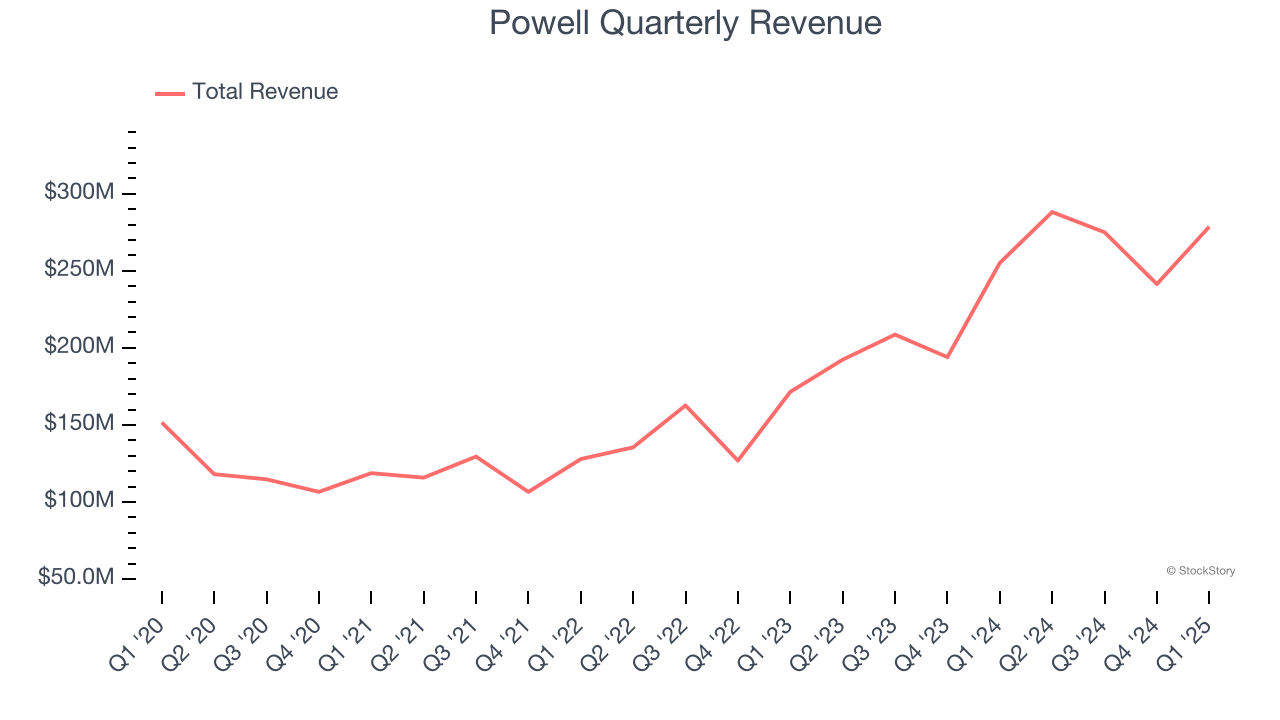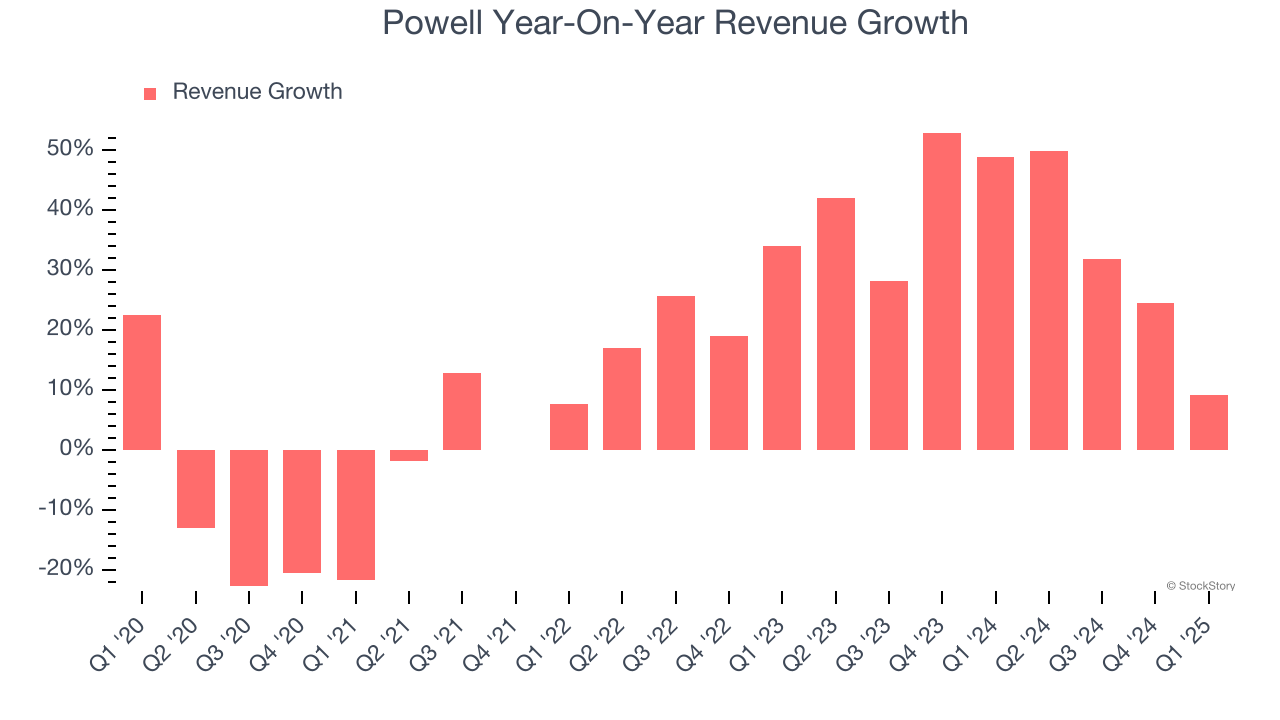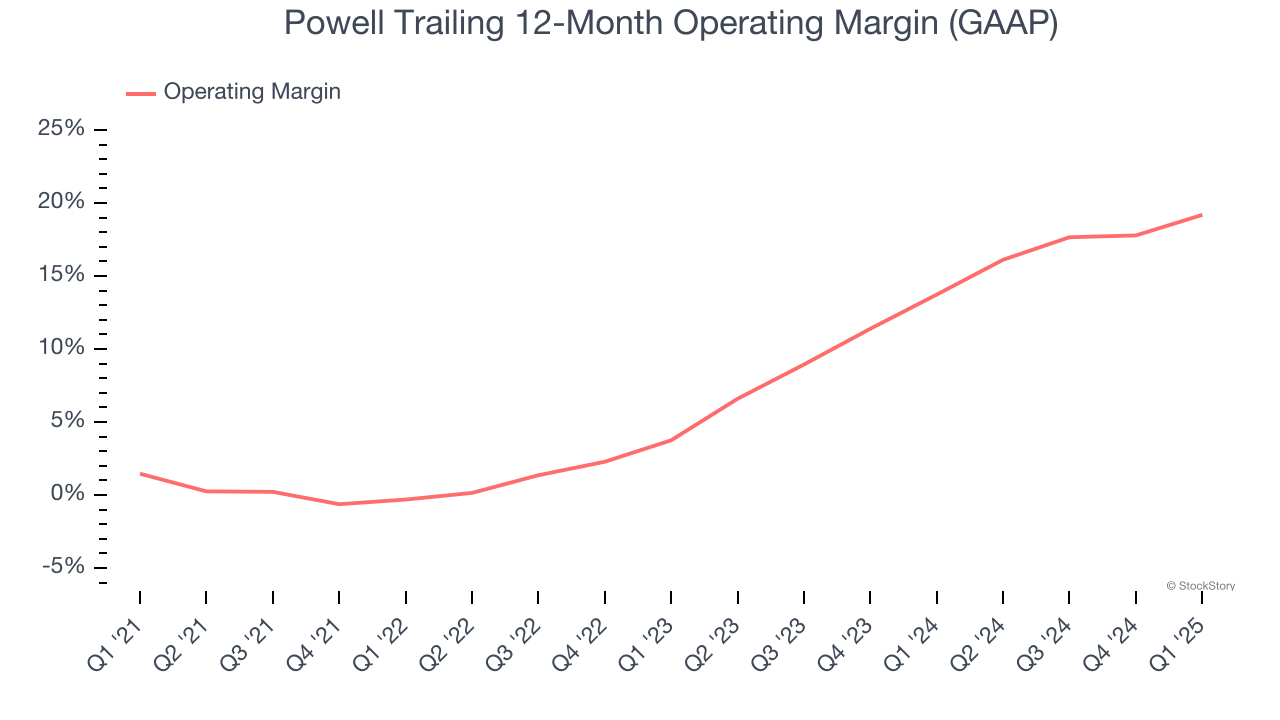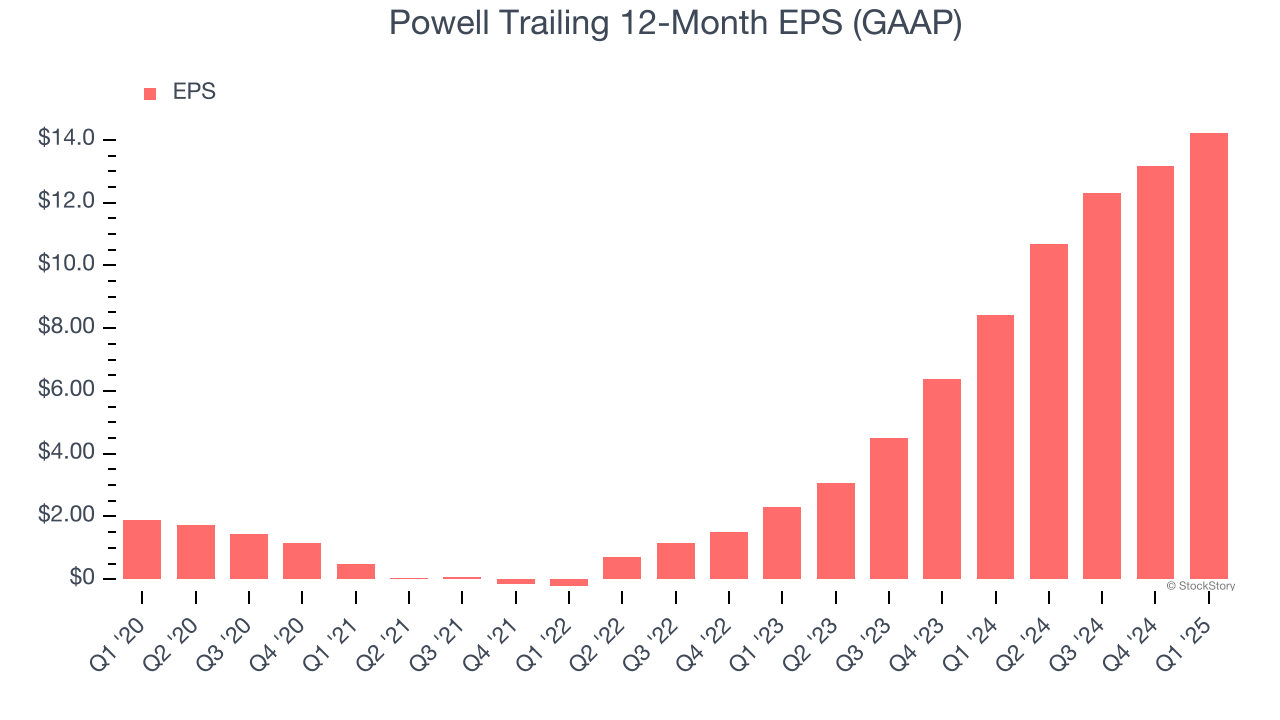
Electrical energy control systems manufacturer Powell (NYSE: POWL) missed Wall Street’s revenue expectations in Q1 CY2025, but sales rose 9.2% year on year to $278.6 million. Its GAAP profit of $3.81 per share was 10.6% above analysts’ consensus estimates.
Is now the time to buy Powell? Find out by accessing our full research report, it’s free.
Powell (POWL) Q1 CY2025 Highlights:
- Revenue: $278.6 million vs analyst estimates of $282.7 million (9.2% year-on-year growth, 1.4% miss)
- EPS (GAAP): $3.81 vs analyst estimates of $3.44 (10.6% beat)
- Adjusted EBITDA: $60.64 million vs analyst estimates of $51.61 million (21.8% margin, 17.5% beat)
- Operating Margin: 21.1%, up from 15.5% in the same quarter last year
- Free Cash Flow Margin: 1.5%, down from 6.3% in the same quarter last year
- Backlog: $1.3 billion at quarter end
- Market Capitalization: $2.32 billion
Brett A. Cope, Powell’s Chairman and Chief Executive Officer, stated, “Our second quarter marked another solid quarter of project execution and robust operational efficiency. Powell delivered a 33% increase in gross profit dollar growth on revenue growth of 9%, leading to a gross margin improvement of 530 basis points compared to the prior year. Order activity in the quarter was also strong, highlighted by two large project awards which included a new greenfield LNG facility to be located along the U.S. Gulf Coast and a large mining project in Canada.”
Company Overview
Originally a metal-working shop supporting local petrochemical facilities, Powell (NYSE: POWL) has grown from a small Houston manufacturer to a global provider of electrical systems.
Sales Growth
Reviewing a company’s long-term sales performance reveals insights into its quality. Any business can put up a good quarter or two, but the best consistently grow over the long haul. Over the last five years, Powell grew its sales at an exceptional 13.7% compounded annual growth rate. Its growth surpassed the average industrials company and shows its offerings resonate with customers, a great starting point for our analysis.

We at StockStory place the most emphasis on long-term growth, but within industrials, a half-decade historical view may miss cycles, industry trends, or a company capitalizing on catalysts such as a new contract win or a successful product line. Powell’s annualized revenue growth of 34.8% over the last two years is above its five-year trend, suggesting its demand was strong and recently accelerated. 
This quarter, Powell’s revenue grew by 9.2% year on year to $278.6 million, missing Wall Street’s estimates.
Looking ahead, sell-side analysts expect revenue to grow 6.5% over the next 12 months, a deceleration versus the last two years. This projection is underwhelming and indicates its products and services will see some demand headwinds. At least the company is tracking well in other measures of financial health.
Today’s young investors won’t have read the timeless lessons in Gorilla Game: Picking Winners In High Technology because it was written more than 20 years ago when Microsoft and Apple were first establishing their supremacy. But if we apply the same principles, then enterprise software stocks leveraging their own generative AI capabilities may well be the Gorillas of the future. So, in that spirit, we are excited to present our Special Free Report on a profitable, fast-growing enterprise software stock that is already riding the automation wave and looking to catch the generative AI next.
Operating Margin
Operating margin is one of the best measures of profitability because it tells us how much money a company takes home after procuring and manufacturing its products, marketing and selling those products, and most importantly, keeping them relevant through research and development.
Powell has managed its cost base well over the last five years. It demonstrated solid profitability for an industrials business, producing an average operating margin of 10.2%. This result was particularly impressive because of its low gross margin, which is mostly a factor of what it sells and takes huge shifts to move meaningfully. Companies have more control over their operating margins, and it’s a show of well-managed operations if they’re high when gross margins are low.
Looking at the trend in its profitability, Powell’s operating margin rose by 17.7 percentage points over the last five years, as its sales growth gave it immense operating leverage.

This quarter, Powell generated an operating profit margin of 21.1%, up 5.7 percentage points year on year. The increase was solid, and because its operating margin rose more than its gross margin, we can infer it was more efficient with expenses such as marketing, R&D, and administrative overhead.
Earnings Per Share
We track the long-term change in earnings per share (EPS) for the same reason as long-term revenue growth. Compared to revenue, however, EPS highlights whether a company’s growth is profitable.
Powell’s EPS grew at an astounding 49.9% compounded annual growth rate over the last five years, higher than its 13.7% annualized revenue growth. This tells us the company became more profitable on a per-share basis as it expanded.

We can take a deeper look into Powell’s earnings to better understand the drivers of its performance. As we mentioned earlier, Powell’s operating margin expanded by 17.7 percentage points over the last five years. This was the most relevant factor (aside from the revenue impact) behind its higher earnings; taxes and interest expenses can also affect EPS but don’t tell us as much about a company’s fundamentals.
Like with revenue, we analyze EPS over a more recent period because it can provide insight into an emerging theme or development for the business.
For Powell, its two-year annual EPS growth of 149% was higher than its five-year trend. We love it when earnings growth accelerates, especially when it accelerates off an already high base.
In Q1, Powell reported EPS at $3.81, up from $2.75 in the same quarter last year. This print easily cleared analysts’ estimates, and shareholders should be content with the results. Over the next 12 months, Wall Street expects Powell’s full-year EPS of $14.23 to stay about the same.
Key Takeaways from Powell’s Q1 Results
We were impressed by how significantly Powell blew past analysts’ EBITDA expectations this quarter. We were also happy its EPS outperformed Wall Street’s estimates. On the other hand, its revenue slightly missed. Overall, this print was mixed. The stock remained flat at $190 immediately following the results.
Is Powell an attractive investment opportunity right now? What happened in the latest quarter matters, but not as much as longer-term business quality and valuation, when deciding whether to invest in this stock. We cover that in our actionable full research report which you can read here, it’s free.



